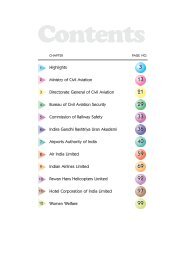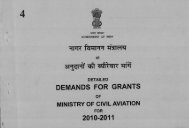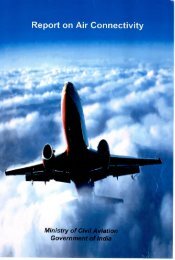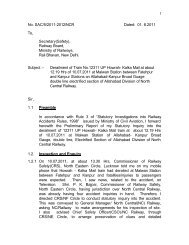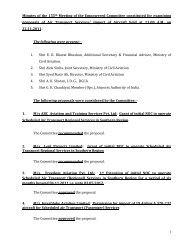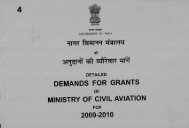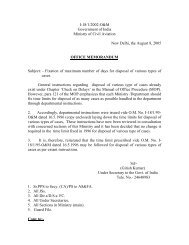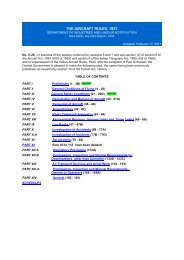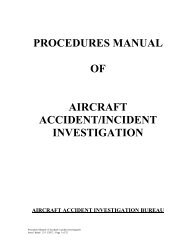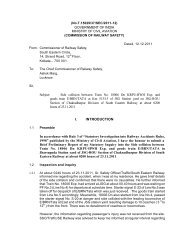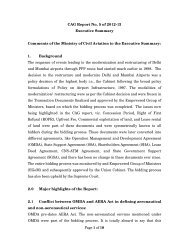3 - Ministry of Civil Aviation
3 - Ministry of Civil Aviation
3 - Ministry of Civil Aviation
Create successful ePaper yourself
Turn your PDF publications into a flip-book with our unique Google optimized e-Paper software.
The airport capacity at Mumbai. and Delhi has already reached saturation level. In view<strong>of</strong> the anticipated air traffic growth in India in the coming years and the obligation to meetinternational standards, the following measures may be undertaken on priority basis:5.3.1 Delhi AirportProvide for:(1) Rapid exit taxiways before the existing taxiway "Delta" (R/W 28).(2) Taxiway in between two runways [09/27 and 10/28] connecting Taxiway "D" and "E" toavoid taxiing <strong>of</strong> aircraft on runway 27. (This will facilitate domestic operations fromRunway 27 when R/W 28 is in use.)(3) Rapid exit taxiway for international traffic landing on Runway 10 to proceed tointernational terminal.5.3.2 Mumbai AirportProvide for:(1) Connecting taxiway for runway 14 beginning to connect international apron to minimiserunway occupancy for international departures.•(2) Rapid exit taxiway for Runway 27 after feasibility study.(3) Connecting taxiway to the beginning <strong>of</strong> Runway 27.(4) Connecting taxiway to Runway 32 from intersection <strong>of</strong> taxiway 'G' with R/W 27.In addition to the above, at both Mumbai and Delhi airports, Advanced SurfaceMovement Guidance and Control . System should be integrated with Airport . Surface DetectionEquipment (ASDE), for better surveillance <strong>of</strong> ground movement <strong>of</strong> aircraft and vehicles. Also,slot allocation system should be made more efficient. Towards this end, the system should takeinto account ground infrastructure facilities, ATS facility, fog management, airspace closure,etc.5.4 Enhancing . Communication, Navigation & Surveillance Capability5.4.1 Communication5.4.1.1Air-Ground CommunicationTwo-way communications between controller and pilot should be made available underthe following categories.VHF (Very High Frequency) Communication: The entire terrestrial air space overIndia and maximum possible oceanic air space within the Indian Flight Information Regions(FIRs) is required to be covered by direct controller-pilot voice communication using VHF. Theexisting coverage <strong>of</strong> VHF is less than adequate and, hence, needs to be enhanced' by providing27



